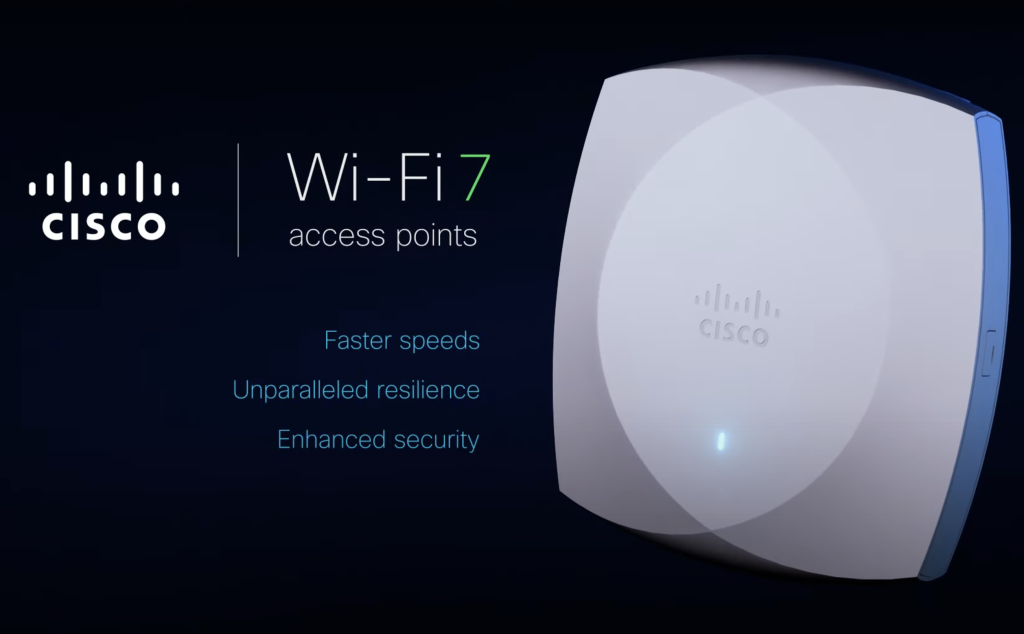
The future of Wi-Fi is brimming with possibilities, revolutionizing how we interact with technology and our surroundings. With advancements paving the way for faster speeds, greater reliability, and seamless integration with smart devices, the potential for truly intelligent spaces is just beginning to unfold. This blog uncovers how next-gen Wi-Fi is unlocking the door to smarter, more connected environments.
A Brief History of Wi-Fi
Wi-Fi began as a technology designed to provide wireless internet access, making it easier for people to connect devices without the hassle of cables. The introduction of the IEEE 802.11 standard in 1997, operating at a frequency of 2.4 GHz with speeds of up to 2 Mbps, laid the foundation for home and business adoption. This standard revolutionized personal computing and home networking by enabling wireless connectivity across laptops, printers, and other devices. However, early Wi-Fi faced challenges such as limited speed, a short range, and significant interference from household devices like cordless phones and microwaves. Security concerns also emerged, as the initial standards lacked the advanced encryption protocols we rely on today, leaving networks vulnerable to unauthorized access. Despite these hurdles, Wi-Fi quickly grew into a transformative technology, supporting the connectivity needs of the modern world.
The Rise of Modern Connectivity
In the late 2000s and 2010s, Wi-Fi began evolving beyond simple internet access to support increasingly data-heavy applications such as video streaming, online gaming, and cloud computing. The demand for higher speeds, lower latency, and the ability to connect countless devices—ranging from smartphones to smart home systems—drove the rise of modern connectivity. This growth coincided with the emergence of the Internet of Things (IoT), which introduced a new era of interconnected devices and smart spaces. Key milestones in Wi-Fi evolution included the transition from Wi-Fi 4 (802.11n) to Wi-Fi 5 (802.11ac) and, more recently, Wi-Fi 6 (802.11ax). Each generation brought faster speeds, better network efficiency, and enhanced user experiences, paving the way for seamless connectivity in an increasingly tech-driven world. Today, Wi-Fi is no longer just a convenience but a critical enabler of innovation and daily life.
A Leap Forward with Wi-Fi 7
Wi-Fi 7 (802.11be) represents the next leap forward in wireless technology, designed to meet the demands of an ever-more connected world. Building on the advancements of Wi-Fi 6, Wi-Fi 7 offers significantly faster speeds, reduced latency, and even greater reliability, making it ideal for applications like 8K streaming, virtual reality, and cloud gaming. Beyond raw speed, it is optimized to manage the growing number of connected devices and real-time data flows within smart homes, businesses, and industries. As a result, Wi-Fi 7 isn’t just about improved internet access—it’s a critical enabler for seamlessly interconnected smart spaces and future technologies.
Higher Speeds and Lower Latency
Wi-Fi 7 delivers speeds up to 30% faster than Wi-Fi 6, enabling quicker and more reliable data transfer for bandwidth-intensive tasks. These speed and latency improvements are crucial for real-time applications such as video conferencing, online gaming, and immersive technologies like augmented and virtual reality, which are increasingly integral to modern smart spaces.
Increased Capacity for IoT Devices
Wi-Fi 7 provides a revolutionary solution for managing large numbers of IoT devices in connected spaces, addressing the growing need for higher capacity and efficiency. Its advanced features allow it to excel in high-density environments like smart factories, intelligent transportation systems, and connected healthcare facilities, where thousands of IoT sensors, cameras, and devices communicate simultaneously while maintaining robust performance and low latency.
Multi-Link Operation (MLO)
Multi-Link Operation (MLO) is a revolutionary feature introduced in Wi-Fi 7 (802.11be) that enables devices to connect and communicate over multiple wireless channels simultaneously. Unlike earlier Wi-Fi generations where devices operated on a single channel, MLO aggregates multiple channels across different frequency bands (e.g., 2.4 GHz, 5 GHz, and 6 GHz) to improve throughput, reduce latency, and enhance connection reliability. This technology ensures better performance in data-intensive smart applications, such as stadiums and airports, which require high-capacity data transmission to support thousands of connected devices seamlessly.
Improved Reliability and Performance
Wi-Fi 7 enhances signal reliability and interference management by utilizing multiple channels and advanced technologies like Multi-Link Operation (MLO) and spatial reuse, allowing for more stable connections even in environments with physical obstacles. This improvement is particularly beneficial in high-traffic environments such as multi-floor offices or warehouses, where connectivity can be compromised by barriers like thick walls or metal objects, ensuring that devices maintain consistent and efficient communication despite these challenges.
Enhanced Security
Wi-Fi 7 incorporates WPA3, the latest security protocol, offering stronger encryption and enhanced protection against attacks such as brute-force, thereby significantly bolstering network security. This ensures secure connections essential for businesses handling sensitive data, such as those in the healthcare and financial sectors, and supports compliance with stringent privacy standards like HIPAA and GDPR, safeguarding confidential information against unauthorized access.
Seamless Connectivity in Smart Spaces
Cisco’s Wi-Fi 7 Access Points
Cisco’s Wi-Fi 7 Access Points are designed to support high-density environments, making it easier than ever to create a future-proof network. These access points ensure reliable connectivity across smart spaces, including offices, hospitals, and factories, by leveraging advanced technologies including 4096-QAM modulation for higher data rates, 320 MHz channel widths to enable faster connectivity, and Multi-Link Operation (MLO), that allows devices to transmit across multiple links simultaneously, for improved efficiency.
Integration with Cisco Spaces Platform
Cisco’s Wi-Fi 7 Access Points seamlessly integrate with the Cisco Spaces platform, enabling businesses to harness a suite of advanced functionalities. Cisco Spaces, the OS for smart spaces – includes a comprehensive set of tools for smart spaces. Enable advanced location computing for Wi-Fi, BLE and UWB, eliminate additional gateways with multi-sensor connect, create spatial context with AI-powered maps and build seamless integrations via a single API. The integration of Wi-Fi 7 and Cisco Spaces allows for real-time occupancy monitoring, which helps optimize space utilization and enhance operational efficiency. Additionally, businesses can leverage features like indoor navigation for improved workplace experiences, and energy management tools to reduce costs and support sustainability initiatives.
Advanced Location Services
Cisco Spaces leverages a combination of Wi-Fi, Bluetooth Low Energy (BLE), and Ultra-Wideband (UWB) technologies to provide advanced location services, which enable precise real-time tracking of assets, people, and devices within smart spaces. This multi-technology approach allows businesses to gain granular insights into their environments, facilitating enhanced operational efficiency, improved safety protocols, and streamlined resource management through accurate location data.
Multi-Sensor Connect for Unified Smart Environments
Wi-Fi 7 supports multi-sensor connectivity, streamlining the creation of unified smart environments by seamlessly connecting a wide array of devices and sensors without the need for additional gateways. This eliminates complexity in smart space management, reducing infrastructure costs while ensuring reliable and efficient integration of IoT devices and systems. It enables businesses to easily deploy and manage smarter, more cohesive environments with minimal overhead.
Ready-to-Use Smart Solutions
Cisco Spaces, when combined with Cisco Wi-Fi 7 APs, offers businesses ready-to-use smart solutions that eliminate the need for custom hardware or complex setups. These solutions enable quick deployment out-of-the-box and hassle-free integration, allowing businesses to immediately leverage advanced capabilities such as location tracking, analytics, and indoor navigation to enhance operational efficiency and user experiences.
Embrace the Future of Wi-Fi with Cisco Spaces
Cisco Wi-Fi 7 and Cisco Spaces are revolutionizing how we interact with physical environments by transforming them into smart spaces powered by high-speed connectivity, seamless integration, and real-time data insights. Cisco Spaces turns your existing network infrastructure — including Catalyst, Meraki APs and Collaboration devices — into powerful sensors, enabling use cases like occupancy monitoring, energy optimization, indoor navigation, and advanced location analytics. Together, these technologies empower businesses to automate operations, improve energy efficiency, and create immersive connected experiences while fostering sustainability and boosting productivity.
For organizations looking to future-proof their operations, adopting Cisco Wi-Fi 7 and Cisco Spaces is essential to staying competitive in an era of rapid digital transformation. These solutions enhance efficiency, elevate the customer experience, and provide tools to support hybrid work, operational safety, smart resource management, and more.
Get a glimpse of the potential of smart spaces by taking the Cisco Spaces Product Tour and see how they can transform your business in real-time.


